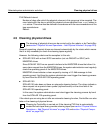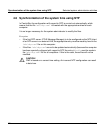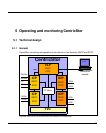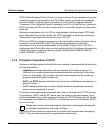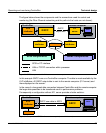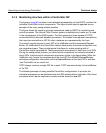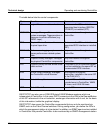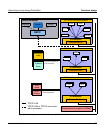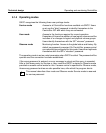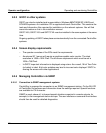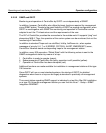
U41117-J-Z125-7-76 87
Operating and monitoring CentricStor Technical design
5.1.3 Monitoring structure within a CentricStor ISP
The figure on page 89 contains a more detailed representation of how GXCC monitors the
individual CentricStor control components. This figure should also be regarded as one
example of the many configurations possible.
The figure shows the logical or physical connections used by GXCC for monitoring and
control purposes. The internal Fibre Channel system is depicted only insofar as it is used
in the management of the RAID system. The thick continuous lines represent TCP/IP
connections which alternate between processors. The broken lines represent connections
that may also exist within an ISP. All other interfaces are represented by thin lines.
The central monitoring point in each ISP is the InfoBroker and the associated Request-
Broker. All InfoBrokers in the CentricStor network have exactly the same configuration and
are considered peers. They provide special interfaces for communicating with all
CentricStor control components. These components are present in latent form in all ISPs.
During the configuration process, you define which components are actually activated in
which ISPs. Inactive control components are shown in blue in the figure below. While the
InfoBroker only ’knows’ the components of the local ISP, the affiliated RequestBrokers
exchange configuration information with the RequestBrokers of the other ISPs, and thus
’see’ CentricStor as an overall unit.
XTCC always monitors a single ISP. As a result, XTCC connects directly to the InfoBroker
of ’its’ ISP.
The following example of many possible CentricStor configurations. In principle the
individual processes can be distributed over the ISPs almost without restriction. Only those
processes which require supervisor access must be started on one ISP.





